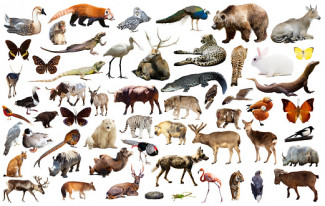
Johns Hopkins UniversityEst. 1876
America’s First Research University
Educating the Mammalogists of Tomorrow

Mammals inhabit nearly every continent and every sea. They have adapted to life underground, in the frozen Arctic, in the hottest deserts, the coldest oceans, and every habitat in between. Some are terrestrial, while others are arboreal, fossorial, or aquatic, and bats are even aerial. Many mammals eat plants, many others are carnivorous or omnivorous, but a few species have specialized diets, dining on termites and ants, or even blood meals. A few mammals lay eggs, others house their young in marsupial pouches, and many (like us) use a placenta to nourish the fetus. In sum, mammals are a diverse and fascinating group. Mammalogists (those who study mammals) are understandably captivated by the group. We are drawn to mammals out of a curiosity for the diversity of behaviors and ecology they exhibit.

The main purpose of writing Mammalogy Techniques Lab Manual is to provide those who wish to study mammals an opportunity to practice the techniques used by today’s mammalogists. An additional goal is to get these students outdoors, where they can hone their observation skills and practice the essential tools of the trade.
Why is this important? Many species of mammals are threatened or their populations are in steep decline. The reasons are varied, including habitat loss, poaching, changing climate patterns, and a host of other factors. Without well-trained and thoughtful mammalogists and wildlife biologists to probe these causes, educate the public, and advocate for mammals, the decline of these species will likely continue. Where will these future field biologists come from? Sadly, many of today’s young people are nature-deprived and lack the basic outdoor skills to study mammals in the wild. Thus, in providing essential field training, Mammalogy Techniques Lab Manual ensures a future generation of mammalogists.
The book is designed for undergraduate and graduate mammalogy or wildlife biology courses. It includes 20 chapters on topics including identifying mammalian skulls and teeth, constructing phylogenies, preparing museum specimens, live-trapping, mark and recapture techniques, extracting DNA from hair samples, satellite GPS tracking, studying social behavior, and much more. Each chapter includes exercises with step-by-step instructions to collect and analyze data. When it is not practical to collect data in the field, most exercises include sample data sets which are readily adapted to laboratory or classroom settings. With over 60 separate exercises to choose from, students will quickly acquire the hands-on experience and scientific skills for a rewarding career working with mammals.
James M. Ryan, is a professor of biology at Hobart & William Smith Colleges. He co-authored the textbook Mammalogy, and is the author of Adirondack Wildlife, A Field Guide as well as Mammalogy Techniques Lab Manual. He has studied mammals at sites in Madagascar, Kenya, Uganda, Ghana, Trinidad, and Ecuador.

